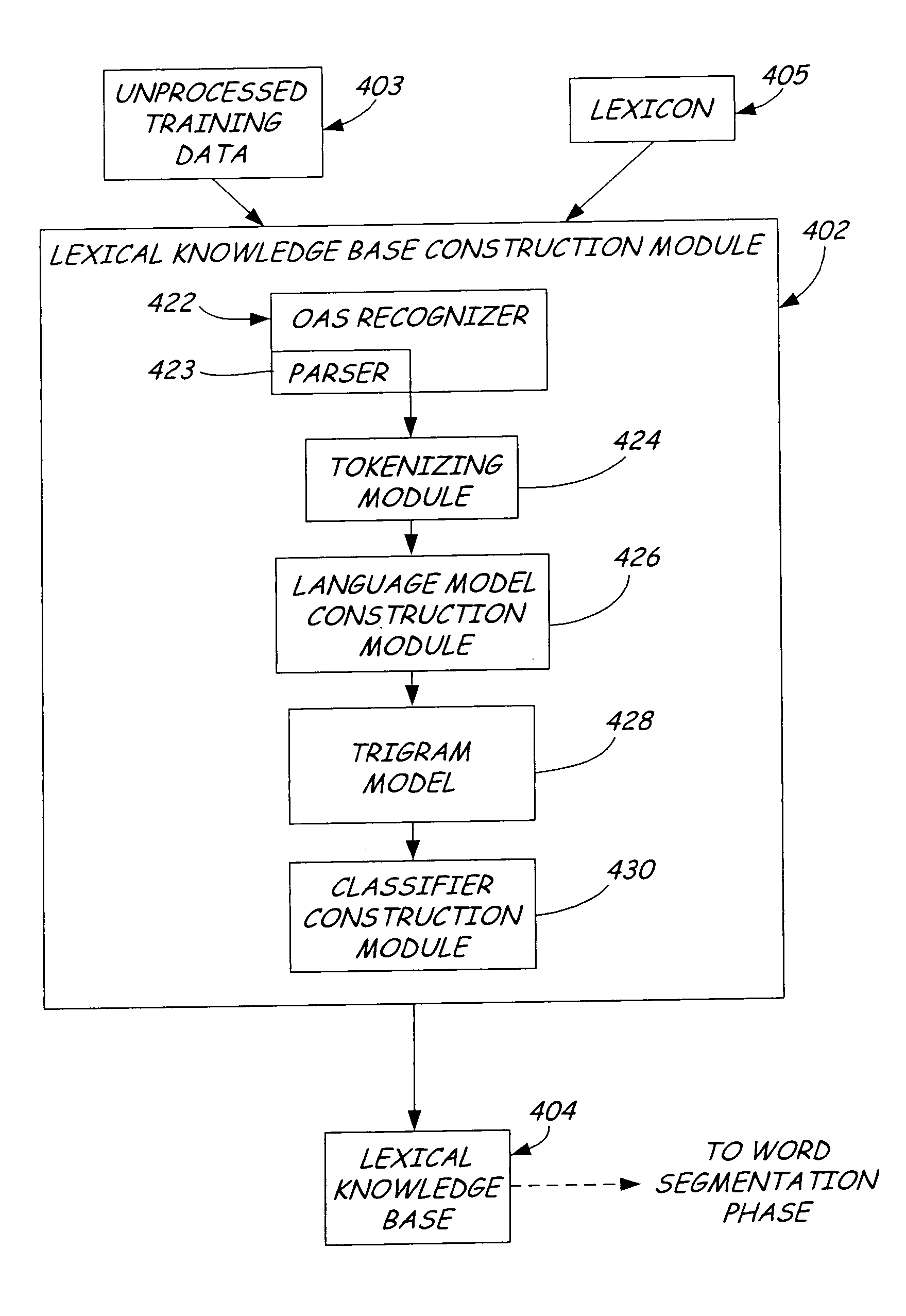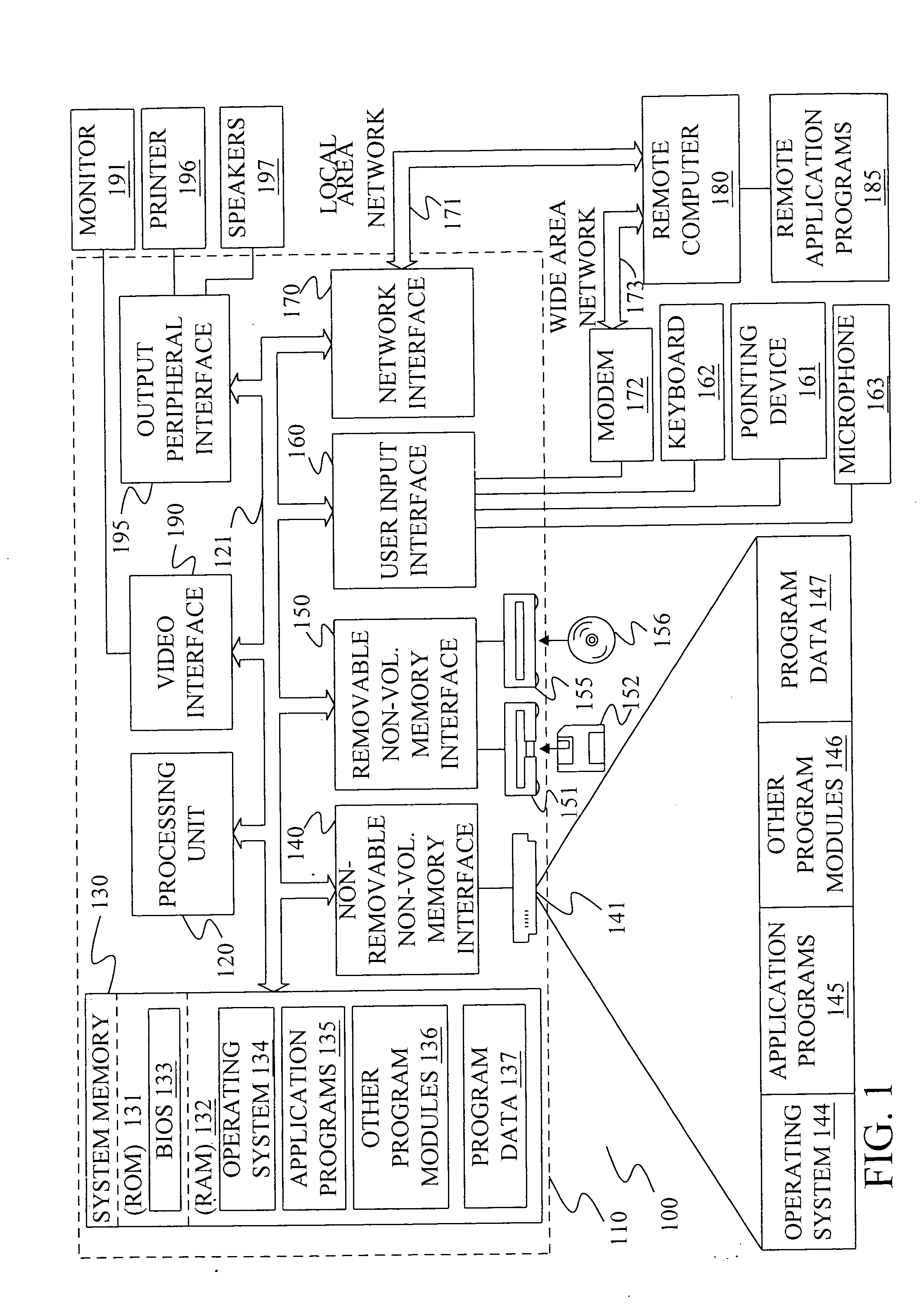Unsupervised training for overlapping ambiguity resolution in word segmentation
a word segmentation and unsupervised training technology, applied in the field of natural language processing, can solve the problems of large manual labeling training set, and inability to detect ambiguity in chinese tex
- Summary
- Abstract
- Description
- Claims
- Application Information
AI Technical Summary
Problems solved by technology
Method used
Image
Examples
Embodiment Construction
One aspect of the present invention provides a hybrid method (both rule-based and statistical) for resolving overlapping ambiguities in word segmentation. The present invention is relatively economical because trained linguists are not needed to formulate segmentation rules are not needed. Further, the present invention utilizes unsupervised training so human resources spent developing a large manually labeled training set are unnecessary.
Before addressing further aspects of the present invention, it may be helpful to describe generally computing devices that can be used for practicing the invention. Referring to FIG. 1, illustrates an example of a suitable computing system environment 100 on which the invention may be implemented. The computing system environment 100 is only one example of a suitable computing environment and is not intended to suggest any limitation as to the scope of use or functionality of the invention. Neither should the computing environment 100 be interpr...
PUM
 Login to View More
Login to View More Abstract
Description
Claims
Application Information
 Login to View More
Login to View More - R&D
- Intellectual Property
- Life Sciences
- Materials
- Tech Scout
- Unparalleled Data Quality
- Higher Quality Content
- 60% Fewer Hallucinations
Browse by: Latest US Patents, China's latest patents, Technical Efficacy Thesaurus, Application Domain, Technology Topic, Popular Technical Reports.
© 2025 PatSnap. All rights reserved.Legal|Privacy policy|Modern Slavery Act Transparency Statement|Sitemap|About US| Contact US: help@patsnap.com



